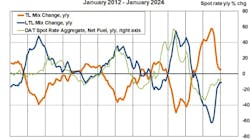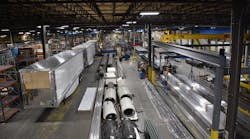Canada’s transition to a low-carbon economy is feasible but challenging because most of the low-hanging fruit has already been picked, according to Michael Burt of the Conference Board of Canada, an economic think tank.
“Carbon taxes alone will not get us to our targets,” he said. “Massive investment in the generation and transmission of clean electricity is required to reduce our dependence on fossil fuels. This will require hard choices about how we use public and private money. There will be winners and losers among different industries.”
In December 2016, Canada’s First Ministers committed to take further action on climate change by adopting the Pan-Canadian Framework on Clean Growth and Climate Change, which recognizes the significant costs and risks associated with climate change—to the environment and the health, security, and future prosperity of Canadians. It also positions Canada to take advantage of the significant clean-growth opportunities associated with taking action on climate change.
The Pan-Canadian Framework is built on four pillars: pricing carbon pollution; complementary actions to reduce emissions across the economy; adaptation and climate resilience; and clean technology, innovation, and jobs.
Canada is developing regulations to achieve a reduction of methane emissions from the oil and gas sector, including offshore activities, by 40% to 45% by 2025. Over the past year, federal, provincial, and territorial governments have worked together to start implementing the measures in the Pan-Canadian Framework to reduce greenhouse gas (GHG) emissions, build resilience to the changing climate, and enable sustainable economic growth. The hope is that this will help Canada meet or exceed its 2030 climate change target of a 30% reduction below 2005 GHG emission levels.
The Canadian government says that carbon pollution pricing is central to the Pan-Canadian Framework because it believes it is broadly recognized as one of the most effective, transparent, and efficient policy approaches to reduce GHG emissions. Some provinces have already established carbon pollution pricing systems, while other provinces and territories are moving forward to design or put in place their own systems.
Burt said it won’t be easy for Canada to achieve a 30% reduction (or about 200 MT) by 2030.
“Eventually, a 60% reduction is likely required,” he said. “How are we going to do this? There are few low-hanging fruit. To illustrate the magnitude of the challenge: Less than 80 MT is power generation. So even if we completely decarbonized the grid, we are just hitting about 40% of our 2030 target. We would also need substantial reductions in oil and gas emissions and transportation.”
So if Canada is not expected to make its targets, what can it do about it?
He listed these policy instruments that drive emissions reductions:
• Regulations.
“Regulations set mandatory limits on GHG emissions performance or mandate use of low-carbon technologies. Examples include: energy efficiency standards for appliances, lighting, building materials; light-duty vehicles (LDV-1) GHG emissions standards for the light-duty vehicle model years 2011 to 2016; light-duty vehicles (LDV-2) GHG emissions standards increase stringency for model years 2017 to 2025. The problem is that usually the government doesn’t know the best solutions. If regulations are too prescriptive, they may not drive business to the best solution.”
• Subsidies.
“Subsidies use public funds to support behaviors that reduce GHG emissions. Examples include: a public transit subsidy; price subsidies to drive electricity capacity additions to renewable sources; and rebates for cost of renovations that replace less energy efficient HVAC equipment, windows, insulation, etc. They’re plagued by free-ridership challenges.”
Burt said the carbon tax will impact fuel prices, varying by fuel source. Natural gas prices will rise by almost 80 per cent although from very low levels
And that will lead to higher household prices.
“As carbon prices rise and the government moves off coal, prices for electricity will rise,” he said. “But electricity and fuels are used in the production of all the goods we buy.” Overall, consumers will pay about 1.4% more for the things they buy. The average family will pay about $1200 more.
“The highest price increases will go to the industries that are energy intensive. Paper prices will rise by almost 4%, chemicals by 3.3%—not petroleum products, just operating cost increases. It will be largely driven by their energy intensity and energy input mix.”
He listed the key economic impacts:
• Reduces consumer spending and business investment.
• Weakens Canadian dollar, leading to reduced imports.
• Reduced cost competitiveness leads to a reduction in exports.
• Government spending increases as carbon tax revenues are spent.
• On net, a small negative impact for the economy.
What is the GHG challenge for transportation? He said it accounts for 25% of Canada’s GHG emissions, and emissions have been trending up. Road freight emissions were 63 MT, or 9% of the total.
“Fuel economy and fuel switching are expected to be the main tools used to address this challenge,” he said. “Weight and distances requirements for freight transportation limit the GHG reduction options.”
Possible technologies for road freight transportation: light/medium trucks (biofuels, hybrids, electric-only, natural gas); and heavy trucks (biodiesel, hydrogen).
The challenges: current hydrogen technology is expensive; and first-generation biofuels must be mixed with diesel due to combustion problems in cold temperatures.
He said some improvement in fuel economy for freight vehicles is expected, but a dramatic change in fuel mix may be required.
Growth in energy use for road freight is expected, even in the most stringent scenario. A 30% GHG reduction would require only a minor reduction in energy usage and an increased use of second-generation biofuels. A 60% GHG reduction (most consistent with limiting increase in temperature to less than two degrees) would require a much more dramatic change: a dramatic drop in energy usage (accelerated phasing out of least energy-efficient vehicles), with hydrogen moving to the fore as the main fuel type.
This scenario will mean that exports of most industries decline.
“Energy-intensive industries and price elastic goods are hurt the most,” he said. “Motor vehicles actually do well in this scenario as they are insulated by much of the price hit by large imports and are helped by the declines in the currency.”
He said the scale of investments required to reduce GHG emissions is massive—it will require $4.1 trillion in investment over the next 25 years, including $1.1 trillion in net new investment.
“Net new investment is equivalent to a 25% increase in total non-residential business investment each year for 25 years,” he said. “Investment on this scale is likely to crowd out other types of investment. The good news is that there’s $3 trillion we would already spend—we just change how we spend it. Then there’s $1.1 trillion in new spending. Crowding out is likely. We have tough choices ahead.”
The investments required:
• Most of the new marginal investment goes to electricity generation, transmission, distribution.
• Primarily nuclear and hydro ($20 billion per year each), with smaller investments in wind and other renewables. It’s driven by replacing fossil fuels used to generate electricity and shifting final energy demand from fossil fuels to electricity.
• Other investments largely require a change in what we buy: transportation, $93 billion per year; and other end users, $28 billion per year.
“There will be more mass transit, and less individual use,” he said. “Other end users will be space heating, energy-efficient appliances, cogeneration/microgeneration, and insulation and improvements to the building envelope.”










